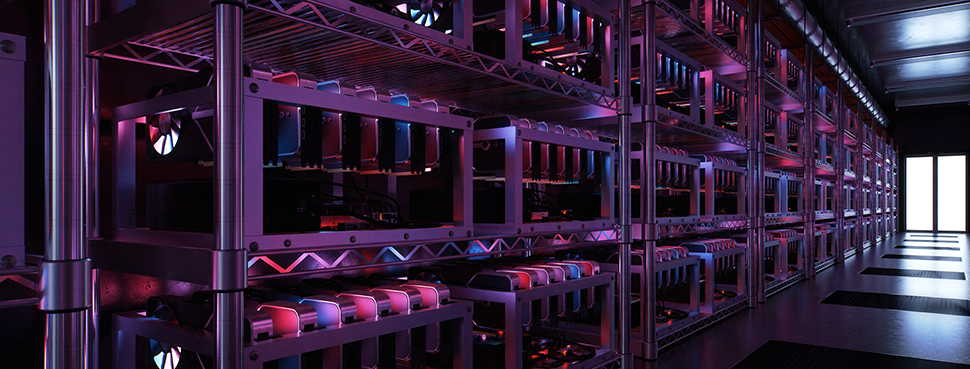Spotlight on Zoning Practice
How Does Your Zoning Treat Crypto Mining?

This spring has been rough for cryptocurrency investors and miners. The values of Bitcoin and many other popular cryptocurrencies have plummeted from all-time highs in the autumn of 2021. Increased competition and rising energy prices mean that miners are paying more to create fewer coins with lower values. But this isn't the first industry crash, and few experts predict that price volatility will lead to the demise of crypto mining any time soon. One noteworthy vote of confidence comes from Fort Worth, Texas, which recently started mining out of city hall.
In the June issue of Zoning Practice, "Zoning for Data Centers and Cryptocurrency Mining," I explore why communities may want to define and regulate data centers and cryptocurrency mines as distinct uses in their zoning codes. And my working assumption is that both uses are likely to pop up in a growing number of communities in the coming years.
Why Do Crypto Mines Need All That Energy?
Perhaps the worst-kept secret about Bitcoin and similar cryptocurrencies is their energy use. Bitcoin alone uses more electricity annually than many populous countries. The reason for this is the Proof-of-Work method these currencies use to securely verify transactions. Miners race each other, using specialized computers, to solve algorithmically generated puzzles. As the number of miners increases, so too does the amount of computing power necessary to remain competitive.
Over the past several years, an increasing share of crypto mining has shifted from home-based "rigs" to large server farms.
And just like the data centers that make the internet work, these facilities require a lot of electricity, both to power computers and to keep those computers cool.
It's important to note, though, that design choices affect the energy efficiency of each currency. And Ethereum, the second most popular cryptocurrency, is planning to switch to a much less energy-intensive Proof-of-Stake verification method later this summer.
Should Zoning Codes Distinguish Between Data Centers and Crypto Mines?
The somewhat snarky answer is, yes, if you want to treat them differently under zoning. So maybe the real question is do these potentially similar uses merit different treatments?
From the outside, they may be indistinguishable. And they may have very similar effects from a land-use perspective: high energy and water use and low employment density and traffic. The clearest potential distinction is that data centers have a clear social license to operate, while the social license for crypto mining is debatable.
Many communities have defined data centers (or some closely analogous term) as a distinct use in their zoning codes. These definitions typically reference the general function of the facility and the degree to which it is occupied by computer systems and related equipment. Comparatively fewer communities have defined cryptocurrency mining as a distinct use. Many of these definitions focus on the specialized purpose of the facility, often with references to other newly defined terms, such as high-density load or server farm, that clarify its distinct characteristics.
Both Plattsburgh, New York, and Missoula County, Montana, have attracted considerable attention for their choice to single crypto mines out for special treatment. In contrast, places like Pitt County, North Carolina, and Moses Lake, Washington, acknowledge both uses but treat them the same under zoning.
Subscribe to Zoning Practice
Each issue of Zoning Practice (ZP) provides practical guidance for planners and land-use attorneys engaged in drafting or administering local land-use and development regulations. An annual subscription to ZP includes access to the complete archive of previous issues.
Top image: Getty Images


